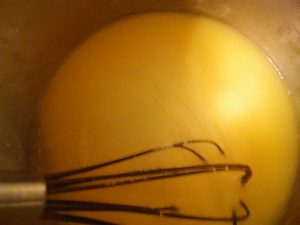Homemade gravy is easier than you think! It just takes a little practice. Once you master it, you’ll never go back to the jars!

You just need a whisk, a pot/pan, flour*, fat (such as drippings from a roast turkey or butter) & liquid (broth, stock, milk, etc.)
A sieve or sifter is helpful to get lumps out of flour before adding it to the pan.
Adding flour to hot fat or liquid will cook the flour too quickly & create lumps. For this method, cool drippings first. This also helps separate the fat and liquid so you can scoop out the fat and blend it with the flour before adding liquid for a smooth gravy.
Use equal parts flour and fat. One tablespoon of each works fine with about 3 to 4 cups of liquid unless you are feeding a large crowd. We suggest starting with that and then making another batch if you need more, especially if you are a beginner.
Melt butter/fat on very low heat & carefully whisk in flour, getting rid of any lumps. (Be extra careful not to burn yourself or others whenever whisking hot items.) Blend thoroughly in pan & cook over low to medium heat, whisking constantly for a couple of minutes until flour is cooked. If using butter, the flour will brown more quickly. Stop at desired color (light tan or darker brown) & whisk in liquid. Cook, whisking constantly, until desired consistency is reached.
Season to taste. (If using salted butter, unsalted broth or liquid is preferred to keep gravy from becoming too salty.)
You can make an endless variety of gravies & sauces this way. The liquid & fat both affect the flavor so choose ones that complement each other.
*Note: Gluten-free flours don’t usually work well with this. Cornstarch is a good option if you want to make a gluten-free gravy or sauce, but the method is different. Follow the directions on the package for best results. (If you need to avoid gluten, check to make sure the brand you choose is prepared in a gluten-free manner/environment.)